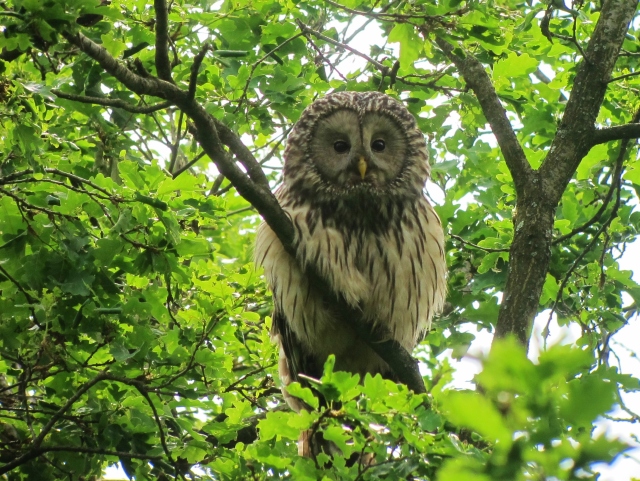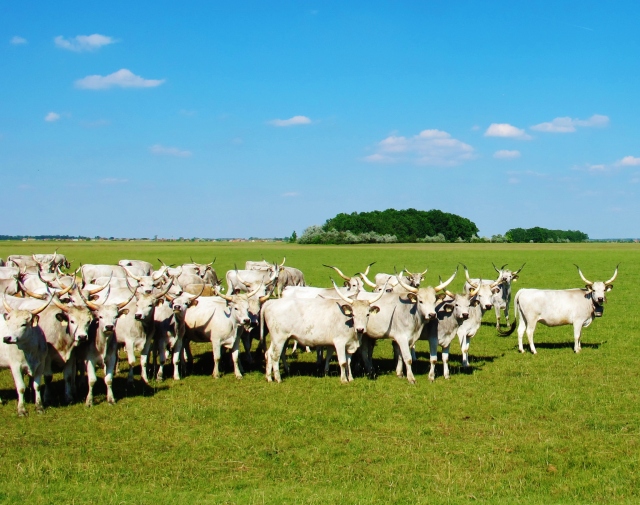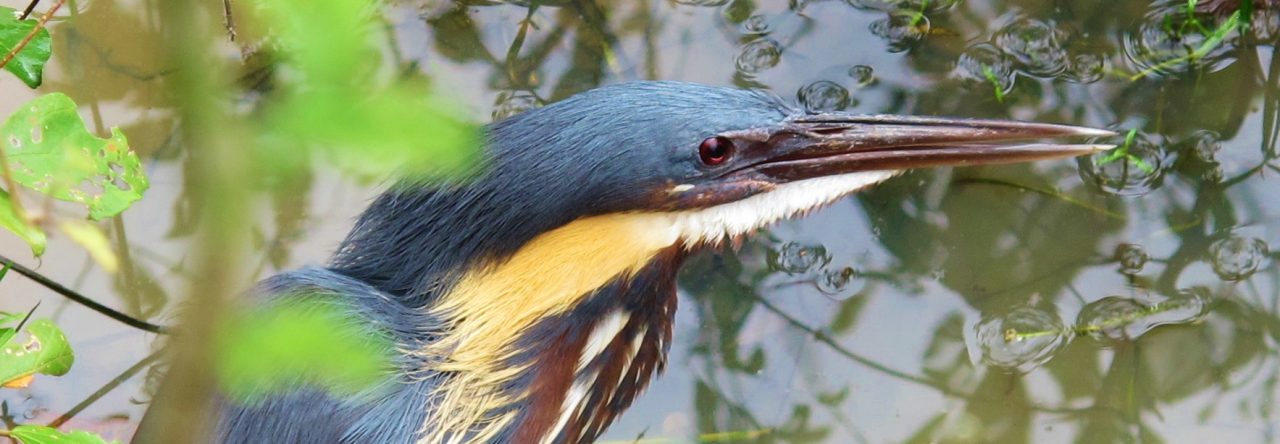
For my “stag do” (or “bachelor party” as it is known in the US), I decided upon the rather unconventional choice of a four-day birding trip to Hungary. My best man is just as keen a birder as I am, and with lifetime Western Palearctic lists for the both of us comfortably in the mid-500s, we are on the stage of “mopping up” one or two birds here and there, having seen the vast majority of what there is to see in Europe. Hungary seemed like a good choice for a long weekend, offering both of us the chance of Saker Falcon, while I needed Ural Owl and Tim was targeting Eastern Imperial Eagle. In addition, mid May would offer some excellent forest and wetland birds, with nine woodpecker species likely, and a spectacular birding bonanza in the marshes of the Hortobagy.
Tim made the arrangements through Saker Tours, and we were generally very impressed, both with the Zemplen Hills bird guide and the quality of the accommodations.

Day One: We picked up our rental car at Budapest airport and headed east. A rest stop along the main M3 motorway, about an hour from the airport, is frequently mentioned in the gen as being a good spot to try for Eastern Imperial Eagle. We spent an hour here and finally came away with superb views of a near-adult, which passed almost over our heads, at one point being mobbed by a ringtail Hen Harrier. This was our only Eastern Imperial Eagle of the trip, so making a stop here proved to be well worthwhile.
We also saw a single Montagu’s Harrier from the motorway, and this also proved to be our sole sighting of this species, which surprised us as we expected this species to be fairly common. Western Marsh Harriers, on the other hand, were abundant in many habitat types.
Gardens, hills and woods near our overnight accommodation in a small village near the Zemplen hills provided many of the common species of Hungary, including White Stork, Crested Lark, Black Redstart, Hawfinch, Red-backed Shrike and Corn Bunting.
Day Two: We picked up our guide at 7am, and birded various locations in the Zemplen hills. The lower levels of these hills are covered in vineyards and orchards, which give way to unspoiled beech, oak and hornbeam forests higher up. Early on, we lucked out on superb views of a Lesser Spotted Eagle, sometimes a tricky bird to find. Our first stop in some mature forest was productive for woodpeckers, with White-backed Woodpecker at its nest hole, a pair of Black Woodpeckers coming in to imitations of their call, and a pair of Middle Spotted Woodpeckers feeding young. Collared Flycatchers were singing, but proved extremely hard to catch sight of in the dense canopy. We heard this species frequently, but my only sightings all day were a briefly seen female, and a male glimpsed in flight.
The highlight of the day – and the trip – was without a doubt the magnificent Ural Owl. Only four nestboxes are occupied in the whole of the Zemplen hills this year – compared to up to 50 in good years – so a guide is essential if you want to find one. We scored with not only a magnificent female in trees near the nest, but also brief flight views of the male in nearby forest. A bird I won’t forget in a while and certainly one of my “birds of the year” so far.
Later in the day we stopped at a quarry, where three well-grown Eagle Owl nestlings were showing, but neither of the parents seemed to be around. A singing Barred Warbler gave us the runaround near the quarry, but we saw many others of this species at another location near Tokay. One bird we heard quite often but never managed to see was River Warbler, so unfortunately it cannot go on my year list ….. it’s 17 years since I had good views of this species, in Germany.
We drove south to the Hortobagy, and arrived shortly before dark, just in time to be shown to a Eurasian Scops Owl nest box, complete with calling male at the entrance – owl species number three for the day.

Days Three and Four: We focused on the Hortobagy marshes, especially the accessible area at Hortobagy-Halasto. In the afternoon of the first day, we were taken to a restricted area where a Red-footed Falcon colony made for interesting viewing. During the course of the afternoon here, we enjoyed five sightings of a huge subadult female Saker Falcon as it hunted for sousliks in the area – which, along with the arctic-dwelling Gyrfalcon, is probably Europe’s most impressive falcon. Also here, a distant Long-legged Buzzard, a pair of Black Storks, and several Lesser Grey Shrikes.
The marshes themselves were nothing short of spectacular, with many species of ducks, herons, and reed bed birds. Of particular interest were abundant singing Bluethroats and Savi’s Warblers, a passage Marsh Warbler seen well, Moustached Warbler and Penduline Tit, a big gathering of ten White-tailed Eagles, a Great Bittern in flight, breeding Red-necked and Black-necked Grebes, gulls including a lone adult Slender-billed and breeding Caspians, and passage waders including both Temminck’s and Little Stints.
Lifers: Saker Falcon, Ural Owl (total 1,903).
Western Palearctic tick: Eastern Imperial Eagle (total 528).
2015 World Year List: 711

Hungary Trip List:
- Great Crested Grebe
- Red-necked Grebe
- Black-necked Grebe
- Little Grebe
- Great Cormorant
- Pygmy Cormorant
- Great Bittern
- Black-crowned Night Heron
- Squacco Heron
- Little Egret
- Great Egret
- Grey Heron
- Purple Heron
- White Stork
- Black Stork
- Eurasian Spoonbill
- Mute Swan
- Greylag Goose
- Common Shelduck
- Mallard
- Gadwall
- Pintail
- Northern Shoveler
- Common Teal
- Eurasian Wigeon
- Garganey
- Common Pochard
- Ferruginous Duck
- Tufted Duck
- White-tailed Eagle
- Eastern Imperial Eagle
- Lesser Spotted Eagle
- Short-toed Eagle
- Black Kite
- Western Marsh Harrier
- Hen Harrier
- Montagu’s Harrier
- Long-legged Buzzard
- Common Buzzard
- European Honey-Buzzard
- Eurasian Sparrowhawk
- Common Kestrel
- Eurasian Hobby
- Red-footed Falcon
- Saker Falcon
- Common Quail (H)
- Ring-necked Pheasant
- Common Moorhen
- Eurasian Coot
- Common Crane
- Eurasian Oystercatcher
- Pied Avocet
- Black-winged Stilt
- Little Ringed Plover
- Northern Lapwing
- Dunlin
- Sanderling
- Curlew Sandpiper
- Little Stint
- Temminck’s Stint
- Wood Sandpiper
- Common Redshank
- Eurasian Curlew
- Black-headed Gull
- Slender-billed Gull
- Common Gull
- Little Gull
- Caspian Gull
- Yellow-legged Gull
- Black Tern
- White-winged Tern
- Whiskered Tern
- Common Tern
- Feral Pigeon
- Woodpigeon
- Stock Dove
- Turtle Dove
- Collared Dove
- Eurasian Cuckoo
- Eagle Owl
- Ural Owl
- Eurasian Scops Owl
- Common Swift
- Hoopoe
- European Roller
- Black Woodpecker
- Grey-headed Woodpecker
- Great Spotted Woodpecker
- Syrian Woodpecker
- Middle Spotted Woodpecker
- Lesser Spotted Woodpecker
- White-backed Woodpecker
- Eurasian Wryneck
- Eurasian Skylark
- Crested Lark
- Woodlark
- Sand Martin
- House Martin
- Barn Swallow
- White Wagtail
- Yellow Wagtail
- Eurasian Wren
- European Robin
- Rufous Nightingale
- Bluethroat
- Common Redstart
- Black Redstart
- Northern Wheatear
- Whinchat
- Common Stonechat
- Song Thrush
- Blackbird
- Barred Warbler
- Blackcap
- Lesser Whitethroat
- Common Whitethroat
- Sedge Warbler
- Moustached Warbler
- Savi’s Warbler
- River Warbler (H)
- Reed Warbler
- Marsh Warbler
- Great Reed Warbler
- Icterine Warbler
- Willow Warbler (H)
- Wood Warbler
- Chiffchaff
- Spotted Flycatcher
- Collared Flycatcher
- Great Tit
- Blue Tit
- Marsh Tit
- Long-tailed Tit
- Bearded Tit
- Eurasian Penduline Tit
- Eurasian Nuthatch
- Red-backed Shrike
- Lesser Grey Shrike
- Common Magpie
- Eurasian Jay
- Western Jackdaw
- Rook
- Hooded Crow
- Common Raven
- Common Starling
- Golden Oriole
- House Sparrow
- Tree Sparrow
- Chaffinch
- Linnet
- European Goldfinch
- European Greenfinch
- Serin
- Northern Bullfinch
- Hawfinch
- Common Reed Bunting
- Yellowhammer
- Corn Bunting
